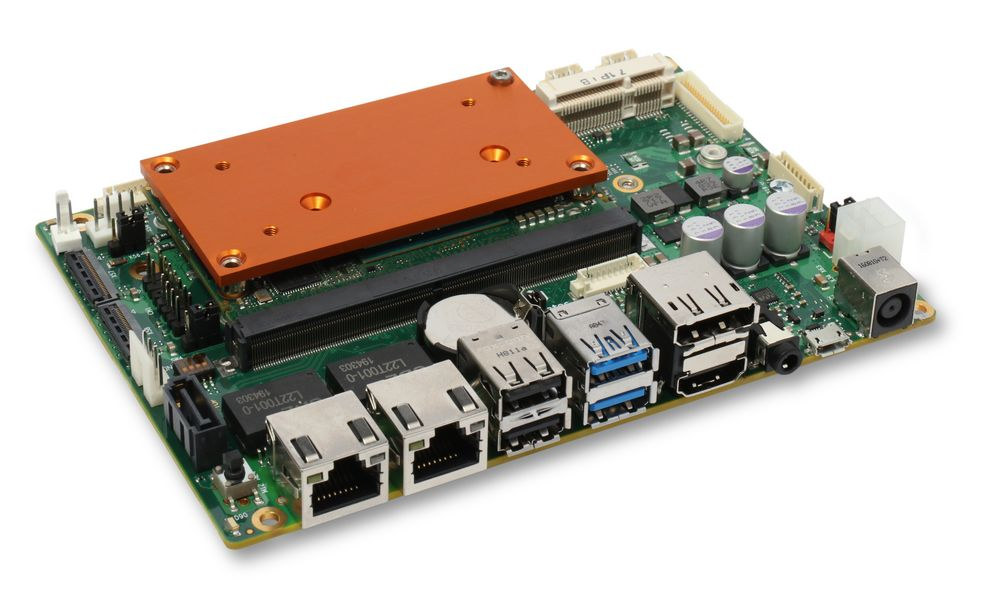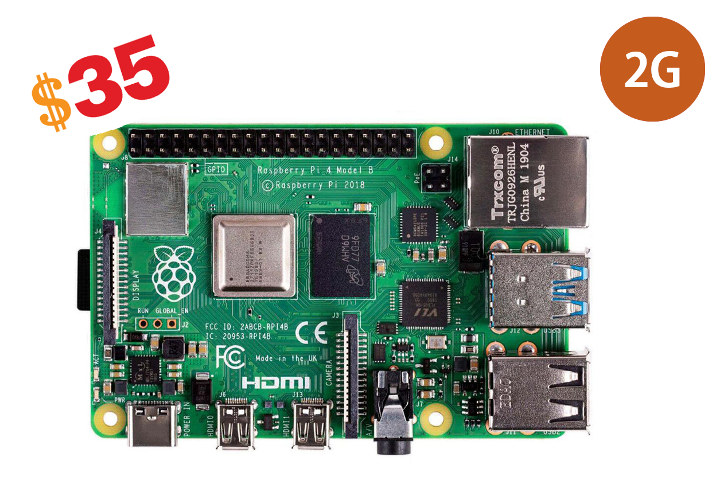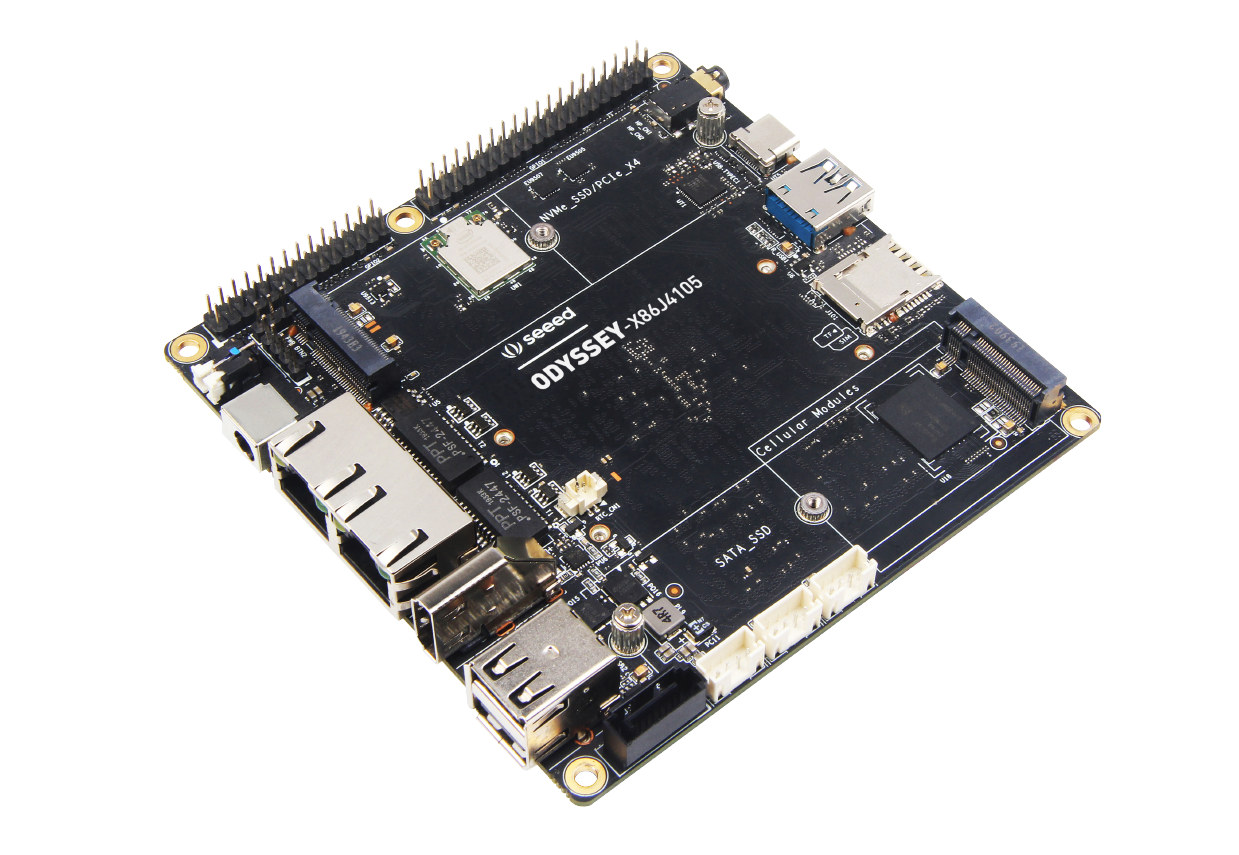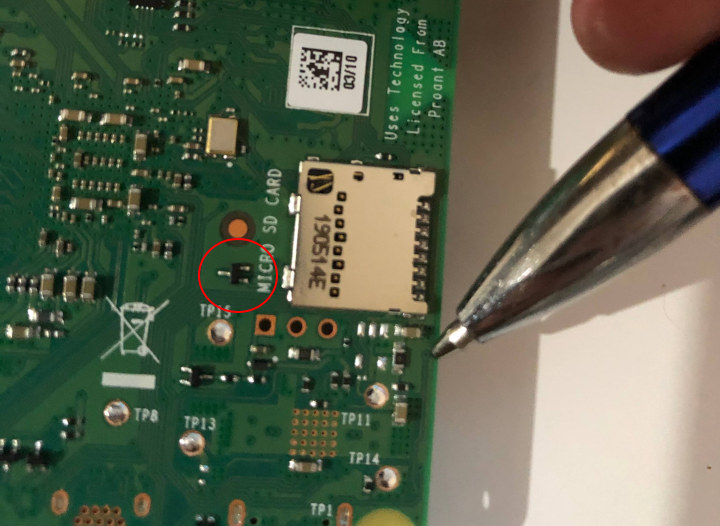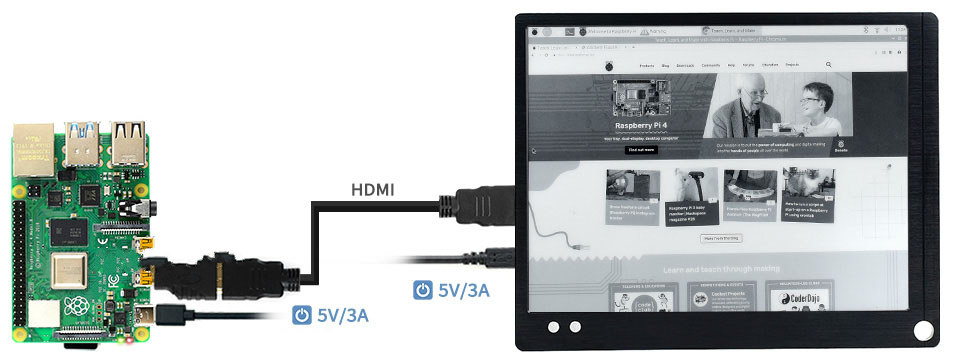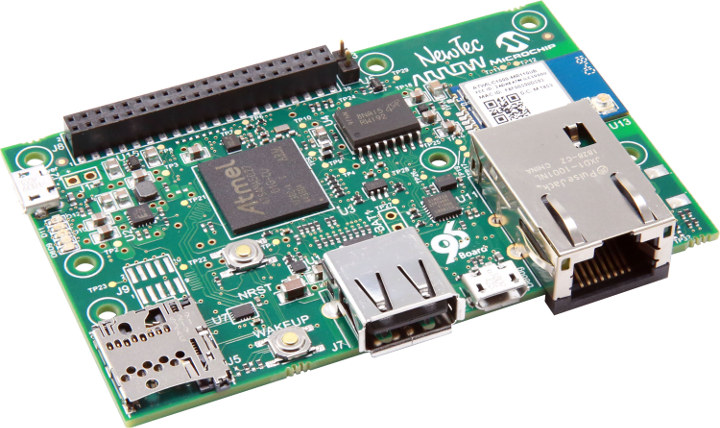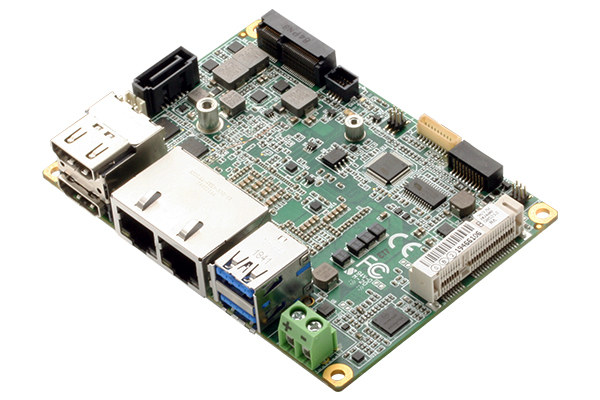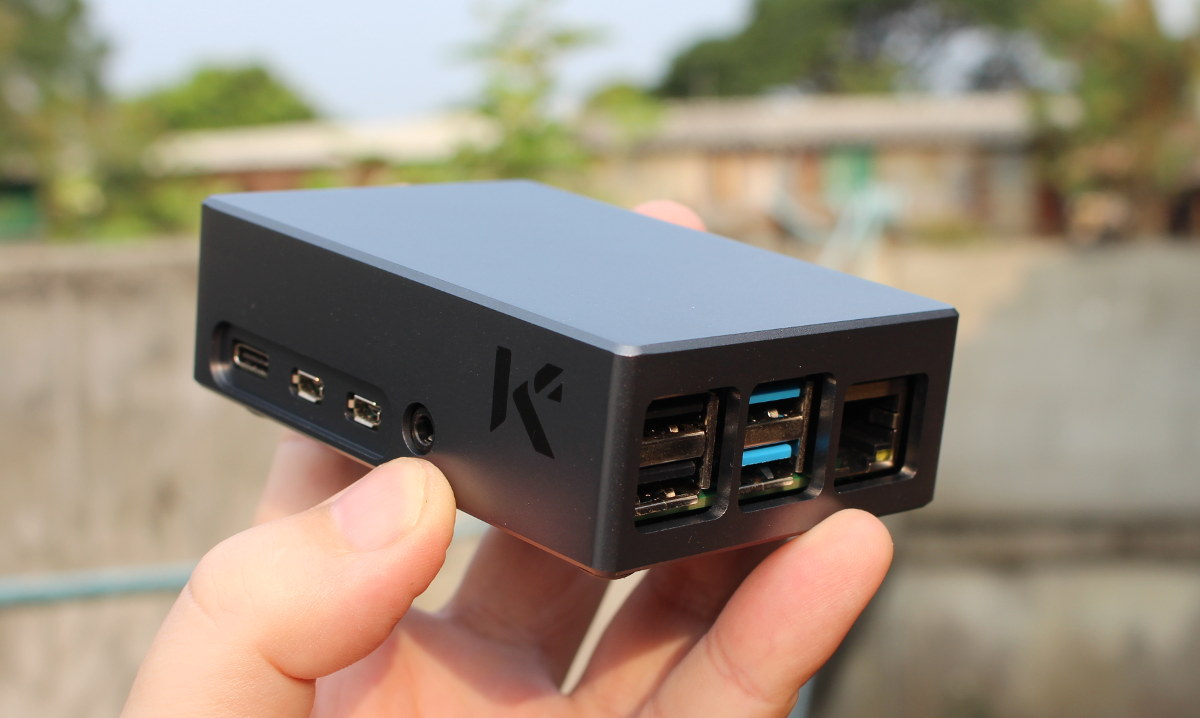Last year, Congatec introduced SMARC 2.0 compliant systems-on-modules based on NXP i.MX 8, i.MX 8M Mini and i.MX 8M Nano processors, together with Conga-SEVAL carrier board designed for evaluation and early software development, but is not suitable for deployment in the field. The company has now unveiled a standard 3.5″ carrier board – conga-SMC1 – that takes any of the company’s i.MX8 SMAC modules, in order to help their customers bring products faster to market thanks to a commercial-off-the-shelf (COTS) board. Congatec conga-SMC1/SMARC-ARM carrier board features and specifications: Supported SoM – conga-SMX8 (i.MX8), conga-SMX8-Mini (i.MX 8M Mini), or conga-SMX8-Nano (i.MX 8M Nano). Future SMARC 2.0 Arm-based modules should also be supported Storage – 1x SATA III (support of SATADOM VCC PIN 7 and PIN 8), 1x SATA power (+5V, +12V), MicroSD card socket, M.2 NVMe SSD support Display Interface 1x LVDS 18/24bit single/dual channel LVDS 2x optional eDP/DSI (dependent on […]
Price of Raspberry Pi 4B with 2GB RAM Drops to $35 Permanently
Raspberry Pi 1 Model B was introduced to the world almost exactly 8 years ago on February 29, 2012, and to celebrate the Raspberry Pi Foundation decided to permanently lower the price of Raspberry Pi 4B with 2GB RAM to $35. This was made possible due to falling RAM prices. The 1GB RAM version will still be sold for $35 to industrial and commercial customers due to long term support commitments. Sadly, the 4GB RAM version remains at $55, so no discount for this version for now. Due to inflation, Raspberry Pi 4B 2G is even cheaper than the first Raspberry Pi 1 since $35 in 2012 is roughly equivalent to $40 now. But more importantly, 8 years make a huge difference in terms of performance and features. The Raspberry Pi Foundation explains the new board is now 40 times faster, has eight times more memory (the very first batch […]
ODYSSEY-X86J4105800 SBC Combines Intel Gemini Lake SoC and Arduino Compatible MCU
Would it be good to have an all-in-one Windows platform used to both develop Arduino code and run that code to control I/O of your project? Or alternatively, have a single board computer capable of video processing and real-time I/Os? That platform already exists. UDOO X86 II SBC features an Intel Braswell processor combined with an Arduino Leonardo compatible Microchip ATmega32U4 MCU. But there’s now another, more powerful option courtesy of Seeed Studio with the oddly named ODYSSEY-X86J4105800 SBC equipped with an Intel Celeron J4105 quad-core Gemini Lake processor to run Windows 10 or Linux distributions, and a Microchip SAMD21 ARM Cortex-M0+ microcontroller compatible with Arduino Zero. ODYSSEY-X86J4105800 SBC specifications: SoC – Intel Celeron J4105 quad-core processor @ 1.5/2.5 GHz (Turbo) with 12EU Intel UHD Graphics 600 @ 250-750 MHz; 10W TDP System Memory – 8GB LPDDR4 RAM Storage Optional 64GB eMMC flash (fitted to ODYSSEY-X86J4105864 model), 1x SATA III data […]
Raspberry Pi 4 Rev 1.2 Fixes USB-C Power Issues, Improves SD Card Resilience
The first Raspberry Pi 4 boards suffered from a poor USB-C power supply compatibility due to issues for the power circuitry. That means if you bought the official USB-C power supply you had no issues, but if you wanted to re-use a spare USB-C power supply or incompatible cable, you may be out of luck. The Register is now reporting that the Raspberry Pi Foundation has discreetly released a new revision (v1.2) of the board that fixes several issues including USB-C PD compatibility, and as Eben Upton explains the new revision also: moved the WLCSP SD card voltage switch to the top side … silk screen tweaks to reduce solder bridging in manufacture”. The new boards have been around for a couple of months as some users report the USB-C power issues have been fixed on new boards. Spotting Differences in the new Raspberry Pi 4 Rev 1.2 Board? The […]
10.3″ E-paper HDMI Display Connects to Raspberry Pi & Jetson Nano SBC’s, Computers
E-paper displays only consume power when updated, work great in bright light, and are easier on eyes when reading text. The downside is the low refresh rate which makes those impractical for videos and games, and most E-paper displays are black and white or with just a few colors. Another hindrance is that most are connected via flat cables for specific display interfaces which may not be the easiest to handle, and you may not be able to easily move the display across platforms if you wish too. Waveshare EINK-DISP-103 10.3″ E-paper display solves this little problem since it should work with any SBC or computer with an HDMI output. EINK-DISP-103 Key features & specifications: 10.1″ e-Paper display, 1872×1404 resolution (225DPI), grayscale (16 shades) Video Input – Mini HDMI port Misc – UPD/RUN switch, contrast adjustment, power indicator, screen refresh button, mode switch button Power Supply – 5V/3A recommended and […]
Arrow Shield96 Arm Linux Board Focuses on Hardware-based Security
Powered by a Microchip SAMA5D2 SiP integrating a Cortex-A5 processor and 128MB DDR2 memory, Arrow Shield96 board has been designed for secure IoT application development with on-board hardware security. Two versions of the SBC are offered: Shield96 Standard reference platform Shield96 Trusted Platform preloaded with the EmSPARK Security Suite software by Sequitur Labs. Both versions come with the same hardware specifications: SiP – Microchip ATSAMA5D27-D1G Arm Cortex-A5 processor @ 500 MHz with 128MB DDR2 Storage – 128MB DDR2 Storage – 128MB (1Gbit) flash, MicroSD card slot Connectivity – 10/100M Ethernet port, 2.4 GHz 802.11b/g/n WiFi 4 via ATWILC1000 “IoT link controller module” USB – 1x USB 2.0 port HW Security – ATECC608 secure element Expansion – 96Boards Mezzanine connector Debugging – JTAG header, serial console via Micro USB port Power Supply – 5V via Micro USB port Dimensions – N/A (CNXSoft note: it’s supposed to be 96Boards compliant, but with […]
AAEON PICO-WHU4 Whiskey Lake Pico-ITX Board is Designed for AI and Edge Computing
AAEON has just launched a Whiskey Lake Pico-ITX SBC made for AI and edge computing with PICO-WH4 featuring a 15W Intel Core i3/i5/i7 or Celeron processor combined with up to 16GB DDR4 memory, The board offers dual Gigabit Ethernet connectivity, dual display support with HDMI connectors, USB 3.2 ports, SATA storage, as well as mPCIe and M.2 expansion slots. AAEON PICO-WHU4 specifications: SoC (one or the other; all Whiskey Lake U-series processors) Intel Celeron 4305UE dual-core processor @ 2.00 GHz (no turbo frequency) with Intel UHD Graphics 610 @ 300 MHz / 1.0 GHz (Turbo); 15W TDP Intel Core i3-8145UE dual-core/quad-thread processor @ 2.2 GHz / 3.9 GHz (Turbo) with Intel UHD Graphics 620 @ 300 MHz / 1.0 GHz (Turbo); 15 TDP Intel Core i5-8365UE quad-core/octa-thread processor @ 1.6GHz / 4.1GHz (Turbo) with Intel UHD Graphics 620 @ 300 MHz / 1.05 GHz (Turbo); 15 TDP Intel Core i7-8665UE […]
KKSB Raspberry Pi 4 Aluminum Case Review – Benchmarks at Stock Clock and Overclocked to 2.0 GHz
KKSB is a Swedish company designing and manufacturing metallic products for various open-hardware products such as single board computers including Raspberry Pi, Arduino, ODROID, Orange Pi and others, as well as mobile phone and tablet stands, and they also have a mini-ITX case planned for March. The company approached CNX Software to review their latest Raspberry Pi 4 case, and I was interested to find out how it would handle cooling. KKSB Raspberry Pi 4 Case Aluminum Unboxing So I recently received the enclosure in a mostly white package. The case comes in two parts as well as a thermal pad for the processor, mounting screws, rubber pads, and two plastic bits for the LED. Aluminum Case Assembly First, peel over the plastic film on one side of the thermal pad, and place it on the extrusion for the processor on the top part of the enclosure. Remove the second […]


